Beyond Almeria City and its immediate surrounds the landscape seems to be entirely engulfed and stifled by an endless sea of plastic greenhouses. It’s a tragic scene and one that reflects Southern Spain at its most unappealing. A true environmental disaster zone that makes your want to cry. You might find yourself asking why you’d ventured out to this far flung South-Eastern corner of Andalucia? Carry on a little further and you’ll find the answer – a thin stripe of protected coastline that is the Gabo de Gata National Park. This is one of Southern Spain’s most beautiful and least developed coastal regions and a personal favourite of mine that I find myself returning to again and again.
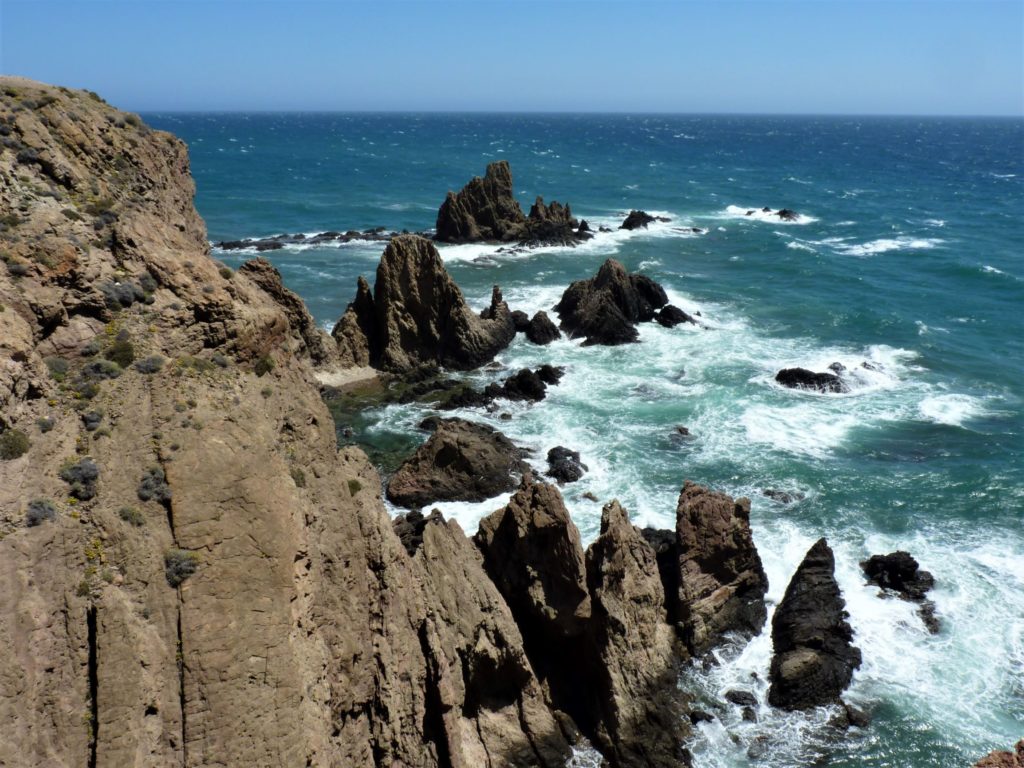

Some of Iberia’s most spectacular and unspoiled beaches can be found here, strung along a 60km landscape where a string of ancient volcanoes plunges into sea. Here the coast oscillates between gentle rolling valleys, floodplains and precipitous cliffs.
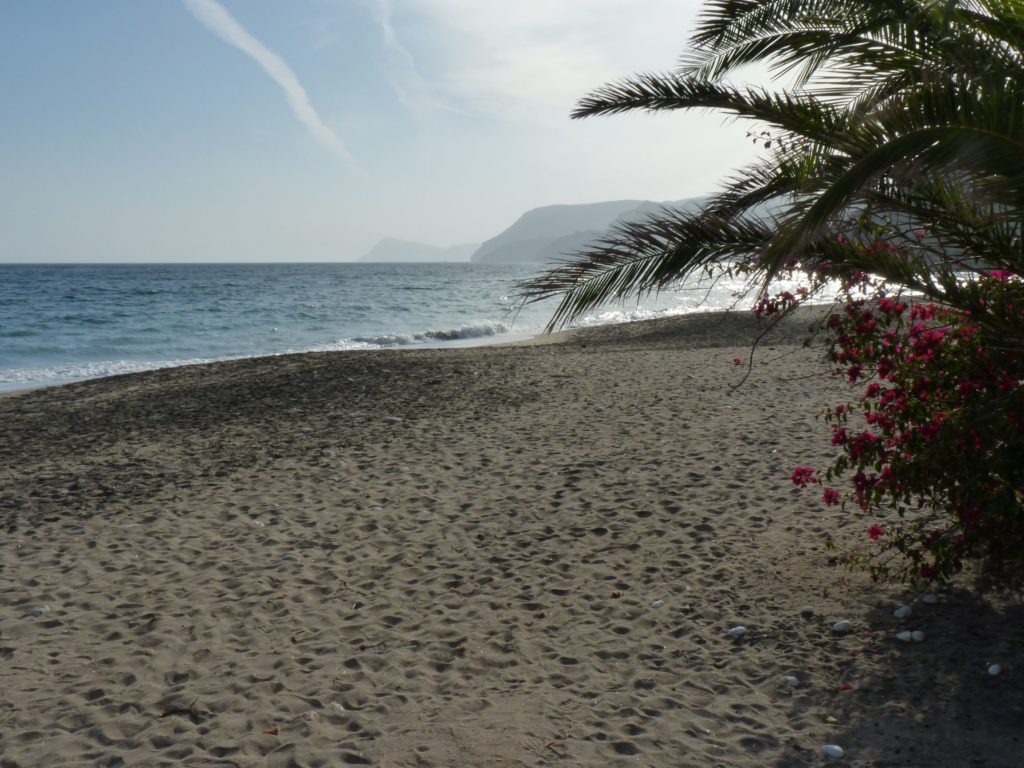
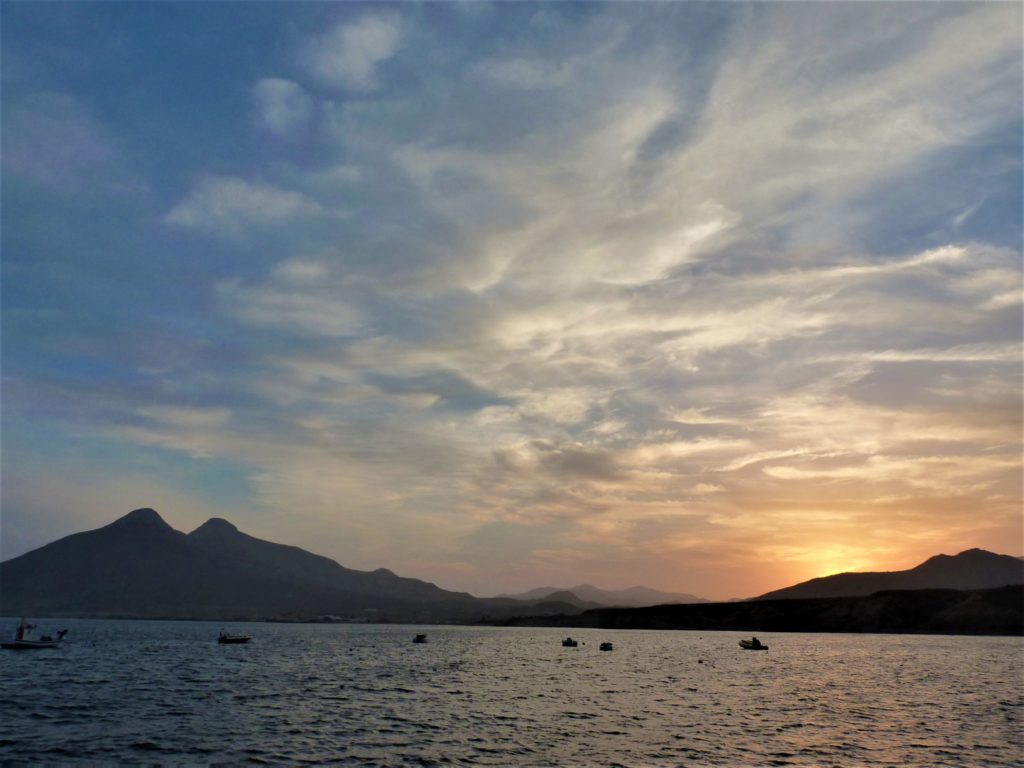
This is Spain’s driest region, a desert receiving only 15cm of rain each year. At the height of the summer the area can be roasted by daily temperatures of over 40֯C and the landscape can have a slightly ‘burnt out’ feel, but in spring the area is alive with a riot of colourful flowers and there are relatively few tourists.

The small, relaxed town of Las Negras is a good spot to base yourself, with a fine campsite in a ‘caleta’ or bay just to the South. Beaches along the coast are beautiful and diverse, ranging from rocky coves to long stretches of golden sand. Many of the beaches are only accessible on foot or by boat, and this provides a glorious opportunity to lace up your hiking boots and explore the trails and trace this meeting point between the land and the deep blue of Mediterranean.
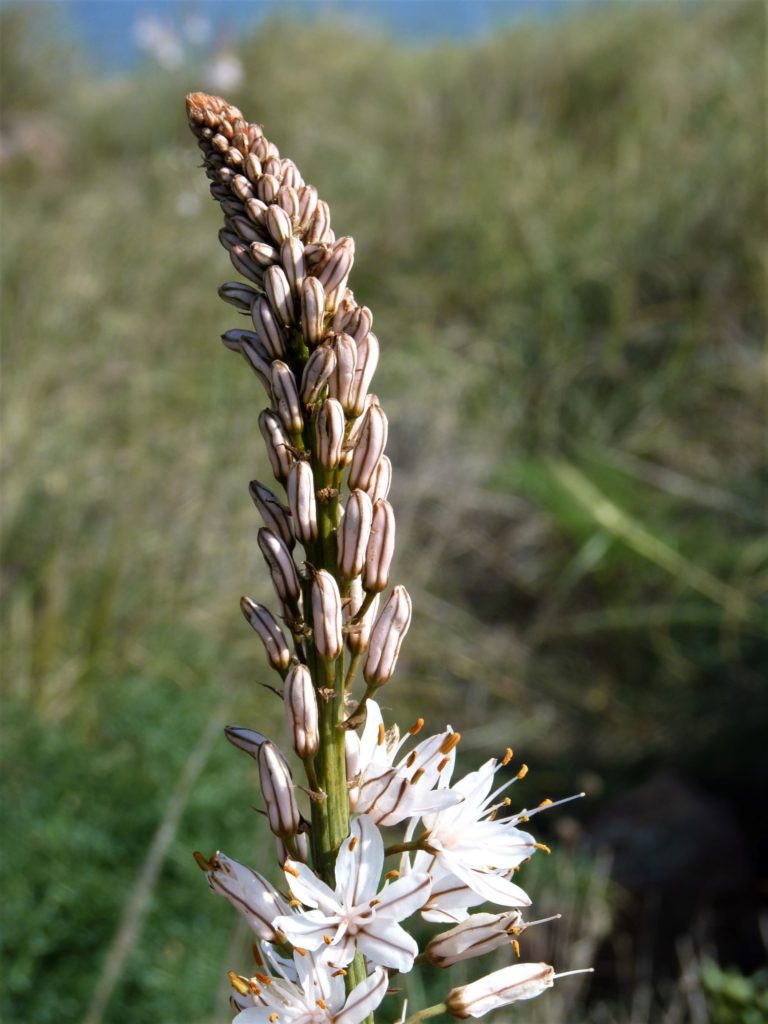
Last time we visited Cabo de Gata we undertook two lovely hikes, both of which I would highly recommend. The first was the short but rewarding hike from Las Negras to the lovely sandy beach of Playa de Playazos. The route, only taking around an hour, at first leads up onto high cliffs plunging down to the sea before slowly descending towards the wide palm shaded valley above Playazos. The rocks change dramatically from steep volcanic formations to layered, chalky cliffs with smooth contoured lines and encompass a group of lovely crystalline bays and sea grass beds. Perfect snorkelling territory! Any glimpse of the sea here just makes you want to launch yourself into the water, and if you’re here in the summer that’s pretty much essential! The combination of walking and swimming is what makes Cabo de Gata so special. The seashore here once formed part of an ancient coral reef and you will see the fossilized forms of shells and a multitude of marine line emerging from the rocks everywhere.
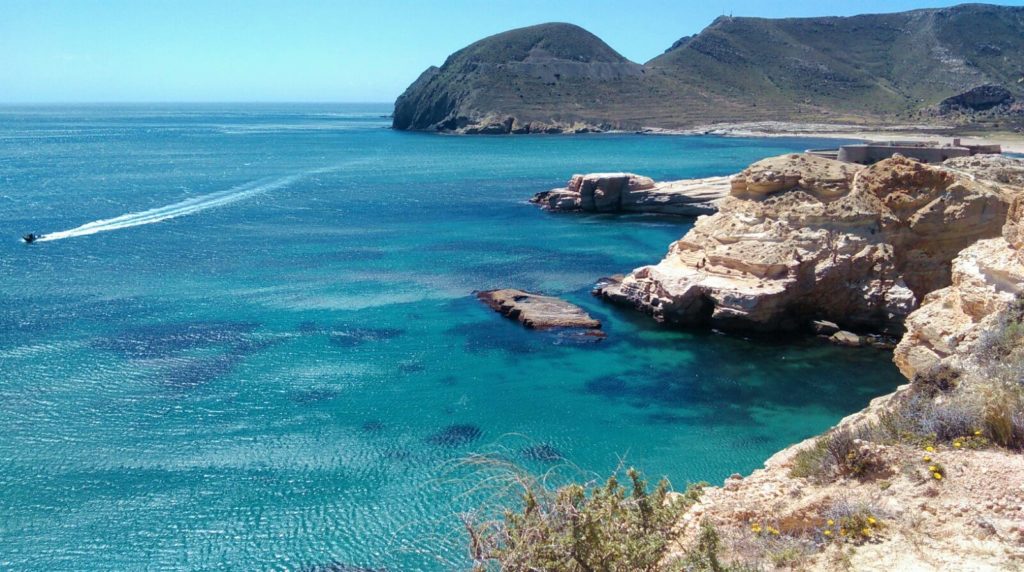
Just before the main stretch of the beach is the impressive form of the Castillo de San Ramon, an 18th Century Fortress, standing guard over the bay. We continued up the trail on the far side of the beach that day, finding another remote pebbly cove at the bass of an unmarked stream bed. This isolated spot was devoid of other visitors, but possessed large piles of plastic rubbish (mainly washed up fishing and boat gear) despite its unvisited nature. An unwelcome reminder of how much we’re polluting our environment everywhere. Still, it was a magnificent day’s walk.
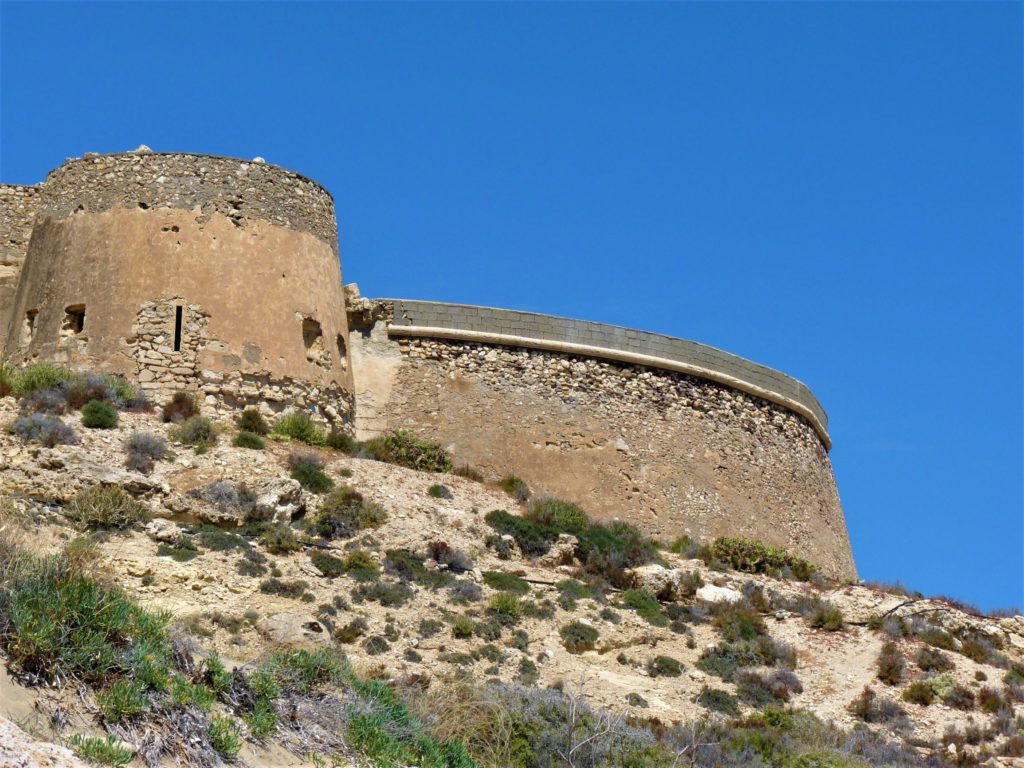
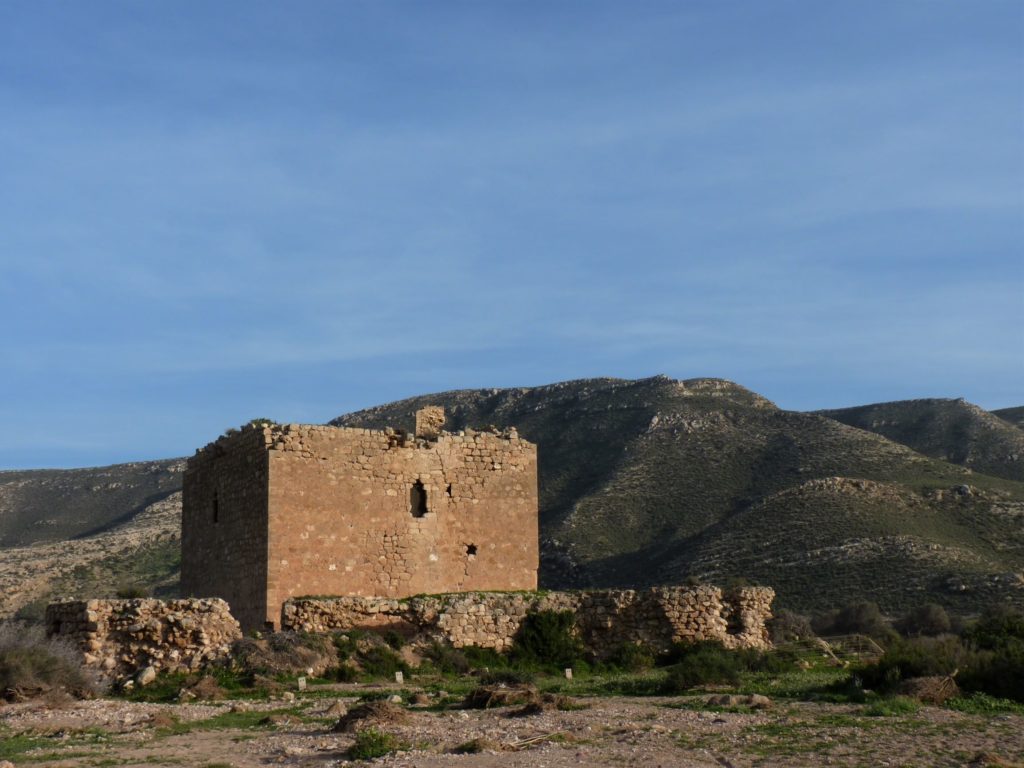
The next day we headed out on a longer, more challenging hike, heading North from Las Negras towards Agua Amarga. From just behind Las Negras a rough dirt road cuts towards the huge chunky mountain of dark basalt rock that gives Las Negras its name. It’s an impressive and rugged bit of coast, high above the sea. The road soon peters out entirely, the path clinging to the side of mountains as the spectacular bay of Cala de San Pedro reveals itself. The bay, and its sandy beach is set at the base of a steep sided valley with the ruins of Castillo de San Pedro overlooking the hangout of a charming and decidedly ‘hippy’ community. The fortress (like the Castillo de San Ramon) was initially built to defend the bay against attacks from pirates who once frequented the coast. This looks like great snorkelling territory, with several deep marine caves set into the bases of cliffs on the far side of the valley. I made a note to return here with snorkelling gear next time.
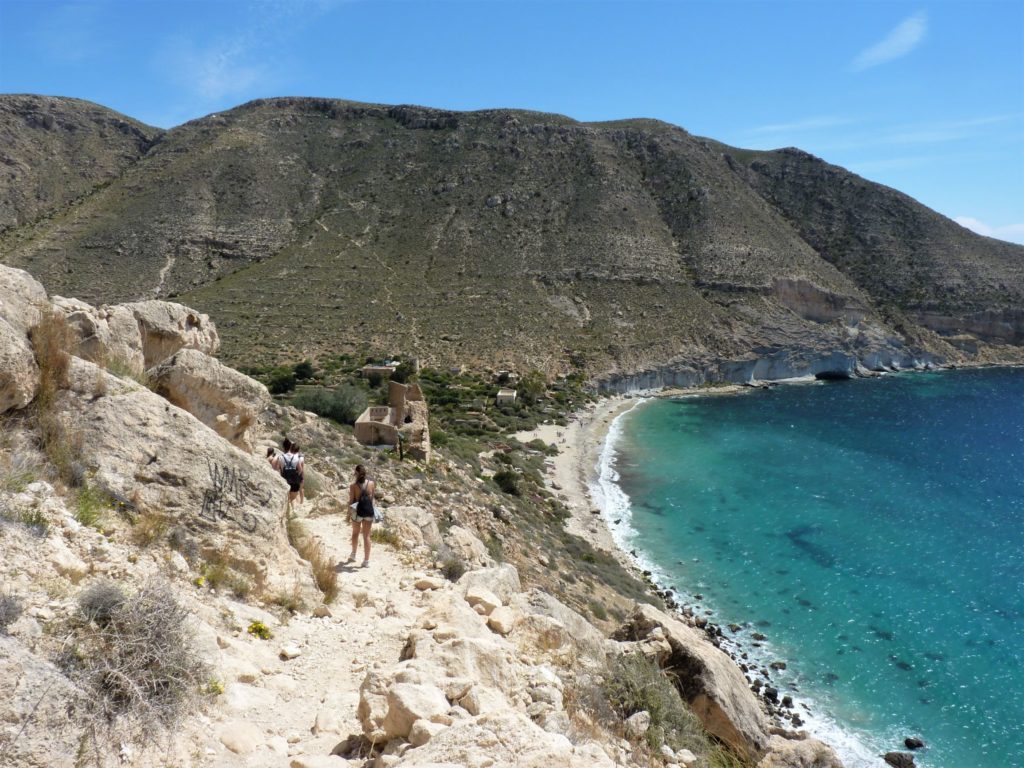
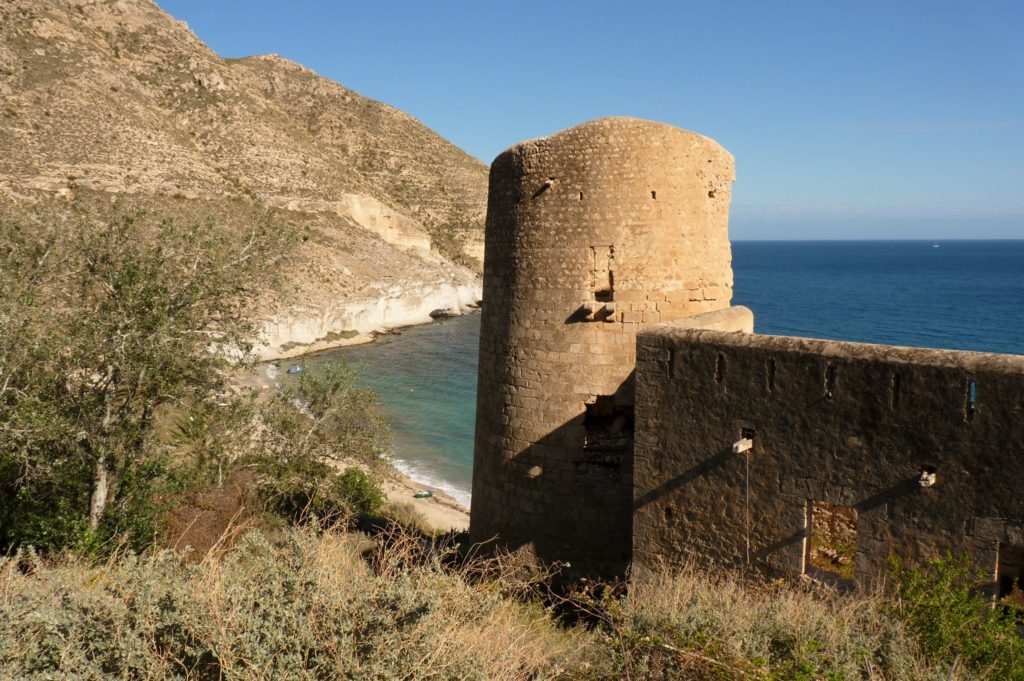
The next part of the trek is probably the toughest, a steep, zig-zagging climb on rocky paths up the valley to a wide inland plateau. The views back down to Cala de San Pedro are impressive and the trail feels adventurous and rugged. Once on the plateau the route continues, slightly inland, through a landscape dominated by tall esparto grass. After a passing through a few valleys, there’s a steep decent down to another lovely beach, the Cala de Plomo. Knowing we had to walk back the same way (which had taken about 3 hours), we decided to chill and walk back from here, rather than keep going to Aqua Amarga. That left more to explore in the future! This is really a lovely stretch of the coast, and once past Cala de San Pedro there were few other walkers. Retracing our steps in the late afternoon/early evening light made the trail even more spectacular, highlighting the oranges and reds in the diverse rock formations.
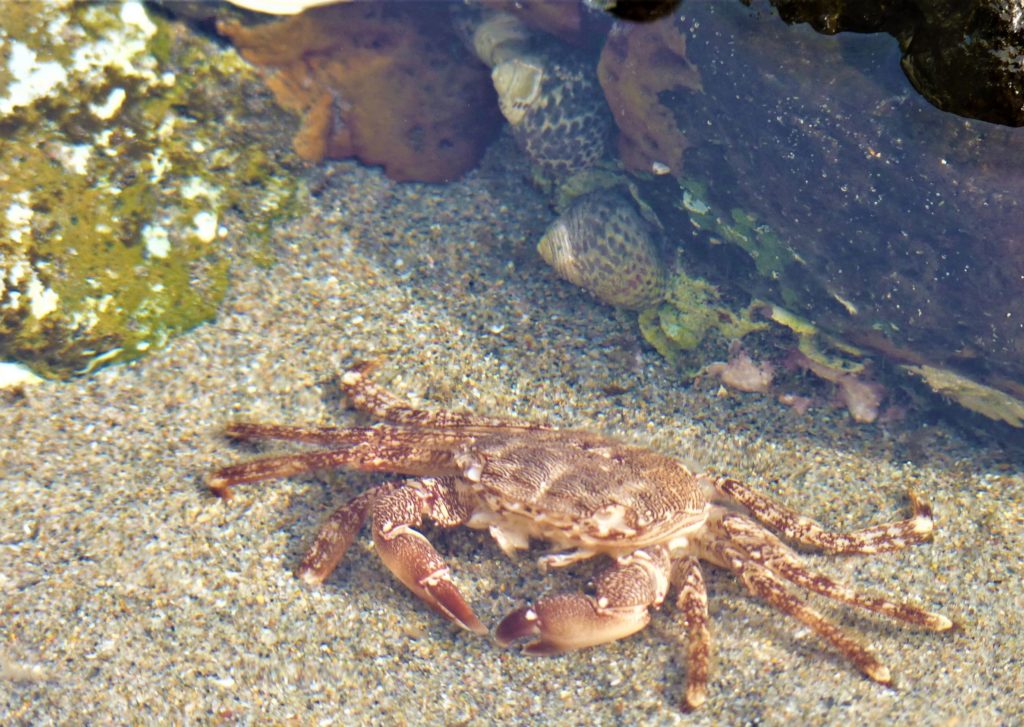
Arriving back at Las Negras a rewarding beer on the bonnet of the car as the sun set made the day’s adventure perfect!
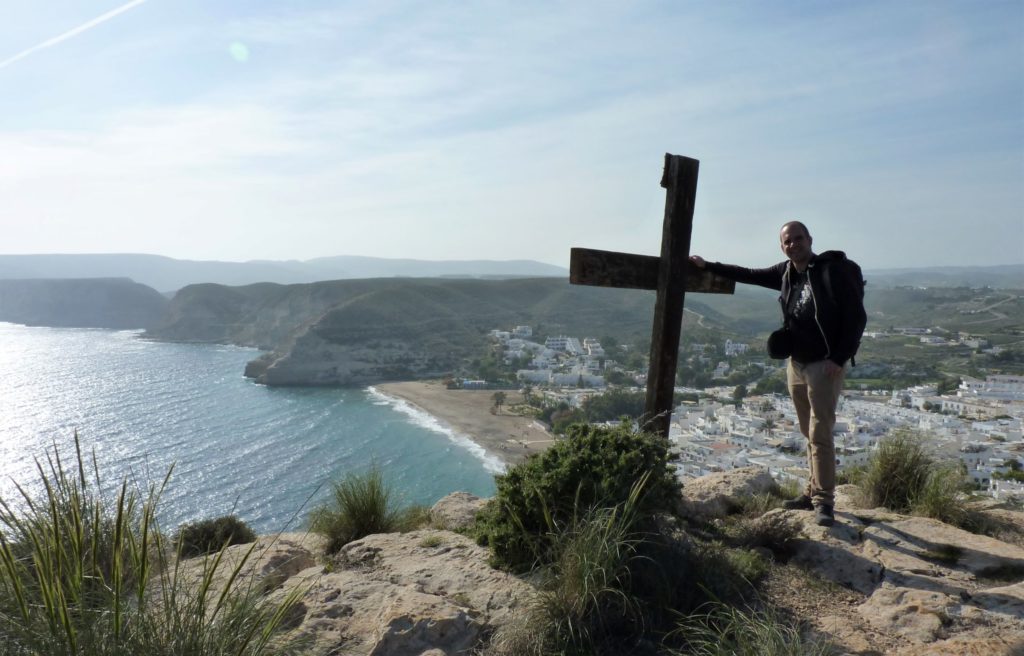


Wonderful essay Stephan and the pics are magnificent.
Many thanks Peter!
Totally agree. Cabo de Gata is heaven (mostly)! Thanks Steve.